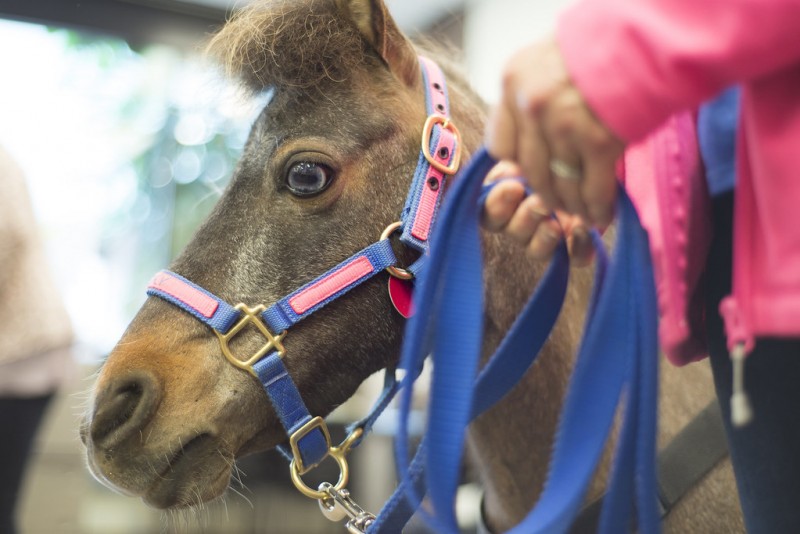
In recent years, the use of specially trained therapy animals has gained significant popularity as a complementary approach to traditional therapy. These remarkable animals, often dogs or cats, possess unique abilities to provide emotional support and comfort to people facing physical or mental health challenges. This article will explore the process of training therapy animals and effective methods of communication to ensure a meaningful and productive therapeutic experience for both the animals and the individuals they assist.
What are Specially Trained Therapy Animals?
Specially trained therapy animals are domesticated pets that undergo rigorous training to provide emotional support, comfort, and companionship to individuals in need. Dogs and cats are the most commonly used therapy animals due to their affectionate and intuitive nature. However, other animals like rabbits, guinea pigs, and even horses can also serve as therapy animals in specific circumstances.
The Importance of Animal-Assisted Therapy
Animal-assisted therapy has been shown to have numerous physical, emotional, and psychological benefits for individuals with various health conditions. Interacting with therapy animals can reduce stress, anxiety, and depression, while also improving mood and overall well-being. This form of therapy has been widely recognized for its ability to enhance communication, social skills, and cognitive functioning in patients.
Choosing the Right Animal for Therapy Work
Selecting the appropriate animal for therapy work is crucial for the success of the intervention. Different animals have different temperaments and capabilities, so it's essential to match the animal's traits with the specific needs of the individuals receiving therapy. Factors such as size, breed, and personality should be considered when choosing a therapy animal.
Fundamentals of Training Therapy Animals
Establishing Trust and Bond
Building a strong bond of trust between the handler and the therapy animal is the foundation of successful training. Trust ensures that the animal remains calm, focused, and responsive during therapy sessions.
Basic Obedience Training
Before proceeding to specialized training, therapy animals must undergo basic obedience training. This includes commands like sit, stay, come, and leave it, which are essential for maintaining control and safety during therapy visits.
Socialization and Desensitization
Therapy animals must be well-socialized to various environments, people, and other animals. Exposure to different stimuli helps them remain calm and composed in diverse settings.
Specialized Skills Training
Therapy animals learn specific skills that match the needs of the patients they will be assisting. For example, a therapy dog working with children might be trained to perform tricks or follow commands that promote engagement and interaction.
Communicating with Therapy Animals
Effective communication is key to ensuring that therapy animals respond appropriately to their handlers and the individuals they are assisting.
Verbal and Non-Verbal Communication
Handlers use both verbal cues and non-verbal signals to guide therapy animals during sessions. Clear and consistent commands, along with body language, convey the desired actions to the animal.
Understanding Body Language
Therapy animals communicate primarily through body language. Handlers need to be adept at interpreting their animal's cues to understand their emotional state and comfort level.
Positive Reinforcement Techniques
Positive reinforcement, such as treats, praise, and affection, is employed to encourage and reward desired behaviors in therapy animals.
Sensing and Responding to Emotions
Therapy animals possess a unique ability to sense and respond to human emotions. They can offer comfort and support during times of distress or sadness.
Integrating Therapy Animals into Treatment Plans
Therapy animals can be integrated into a variety of settings to support individuals in their healing journey.
Clinical and Non-Clinical Settings
Therapy animals can be found in hospitals, rehabilitation centers, schools, nursing homes, and even disaster relief situations. Their presence enhances the therapeutic environment and promotes positive outcomes.
Legal and Ethical Considerations
Introducing therapy animals into different settings requires adherence to legal and ethical guidelines. Proper certification and insurance are often necessary to ensure the safety and well-being of both patients and animals.
Benefits of Therapy Animals in Various Health Settings
Therapy animals have demonstrated their value in diverse healthcare environments.
Hospitals and Healthcare Facilities
In hospitals, therapy animals have been shown to reduce stress and anxiety among patients, leading to improved recovery rates and shorter hospital stays.
Schools and Educational Institutions
Therapy animals in educational settings can create a more positive and supportive learning environment. They can also assist children with special needs in improving their social and emotional skills.
Mental Health Centers and Support Groups
Therapy animals can offer valuable companionship and emotional support to individuals dealing with mental health challenges, promoting feelings of connection and acceptance.
Case Studies: Successful Therapy Animal Interventions
Highlighting real-life examples of successful therapy animal interventions can provide insights into the effectiveness of this approach.
The Therapeutic Bond: Impact on Patients and Handlers
The relationship between therapy animals and their handlers plays a significant role in the success of therapy sessions.
Challenges and Precautions in Therapy Animal Work
While therapy animals provide immense benefits, there are challenges and precautions to be aware of.
Allergies and Health Concerns
Handlers must consider potential allergies and health conditions of patients when bringing therapy animals into different environments.
Managing Stress and Burnout
Handlers may experience stress and burnout due to the emotional demands of therapy animal work. Self-care and support systems are essential for maintaining well-being.
Safety and Hygiene Practices
Maintaining proper safety and hygiene practices is crucial for the well-being of patients, handlers, and therapy animals alike.
Future Directions in Animal-Assisted Therapy
As the field of animal-assisted therapy continues to grow, new possibilities and applications emerge.
Specially trained therapy animals have proven to be invaluable assets in enhancing the well-being of individuals facing physical or mental health challenges. Their ability to communicate non-verbally and provide unconditional support is remarkable. By carefully selecting, training, and communicating with therapy animals, we can optimize their therapeutic impact and create transformative experiences for those in need.
Birthday Special - Wishing the Man of Melodious Voice, Sonu Nigam!